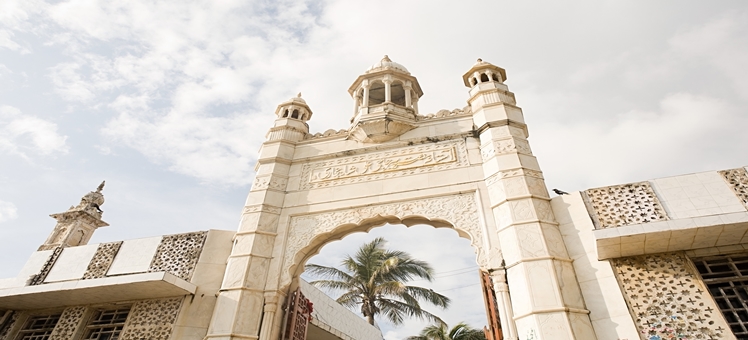
Amidst the daily chaos of this city that’s striving towards modernity and power, there is still culture, history, architecture and temples. The British Raj certainly left their mark on this city. But it is still a city of two halves, next to shiny metal shopping malls are slum dwellers living in poverty. Explore the city and uncover a city buzzing with life and enjoy all it has to offer from colonial architecture to 1<sup>st</sup> century AD temples.
Gateway of IndiaSituated in the popular area of South Mumbai is one of the most famous monuments. Left as a reminder of the British Raj, dating back to 1924 is the Gateway of India. Set on the waterfront in the Apollo Bunder area, the gate overlooks the Arabian Sea. Standing at over 26 meters, it is a popular photo opportunity for tourists.
Elephant Caves
A mere 10 kilmoters to the east of the city on Elephanta Island in the Mumbai Harbor are the Elephant Caves. The caves are made up of a network of large cavities in the rock, with fascinating Hindu carvings inside and out thought to be from a civilisation that has since disappeared. The caves are a UNESCO World Heritage Site and have no official date, but historians estimate they date back to as early as the 6th century.
Sanjay Gandhi National Park
Previously known as Borivali National Park, the park is situated in the area of Northern Mumbai. The area, which is over 100 square kilometers, is protected. It is bordered on three sides by the city of Mumbai. Inside the park are the 2,400 year old Kanheri Caves which have been carved out of the mountain side rocks. The park is made up of dense forest which is home to leopards, spotted deer, monkeys and reportedly wild Bengal tigers.
Haji Ali Dargah
As one of the most iconic places in Mumbai, Haji Ali Dargah is a mosque on the coast of Worli in Southern Mumbai. The mosque is of Indo-Islamic architecture and was constructed in 1431 in memory of Sayyed Peer Haji Ali Shah Bukhari. Pilgrims of all religions visit the mosque to receive a blessing from the saint it was built in memory of. As the Dargah is built on a tiny islet, access to it strongly depends on the tides, as at high tide the causeway is submerged.
Siddhivinayak Temple
The Hindu temple of Siddhivinaya is dedicated to Lord Shri Ganesh, the god of culture and wisdom and located in Prabhadevi in Southern Mumbai. The exterior of the building slightly resembles a bee hive; lots of angular turret shape sections make up the large pale colored building which was built in 1801. It is thought to be one of the richest temples in Mumbai with a gold plated inner roof. Enter inside the hall to see the shrine of Ganesh who will grant your wish.
Chowpatty Beach
Located in the south of Mumbai is Chowpatty Beach, perhaps the city’s most well-known beach. You’ll find it at the top end of Marine Drive’s promenade; this beach is best known for its annual Ganesh Chaturthi celebrations. Every year, people from all over the city immerse Lord Ganapati in the Arabic Sea. It is quite a commercial beach though, as it is lined with food vendors and children’s entertainment and is probably not the best to swim from, but definitely worth a visit.